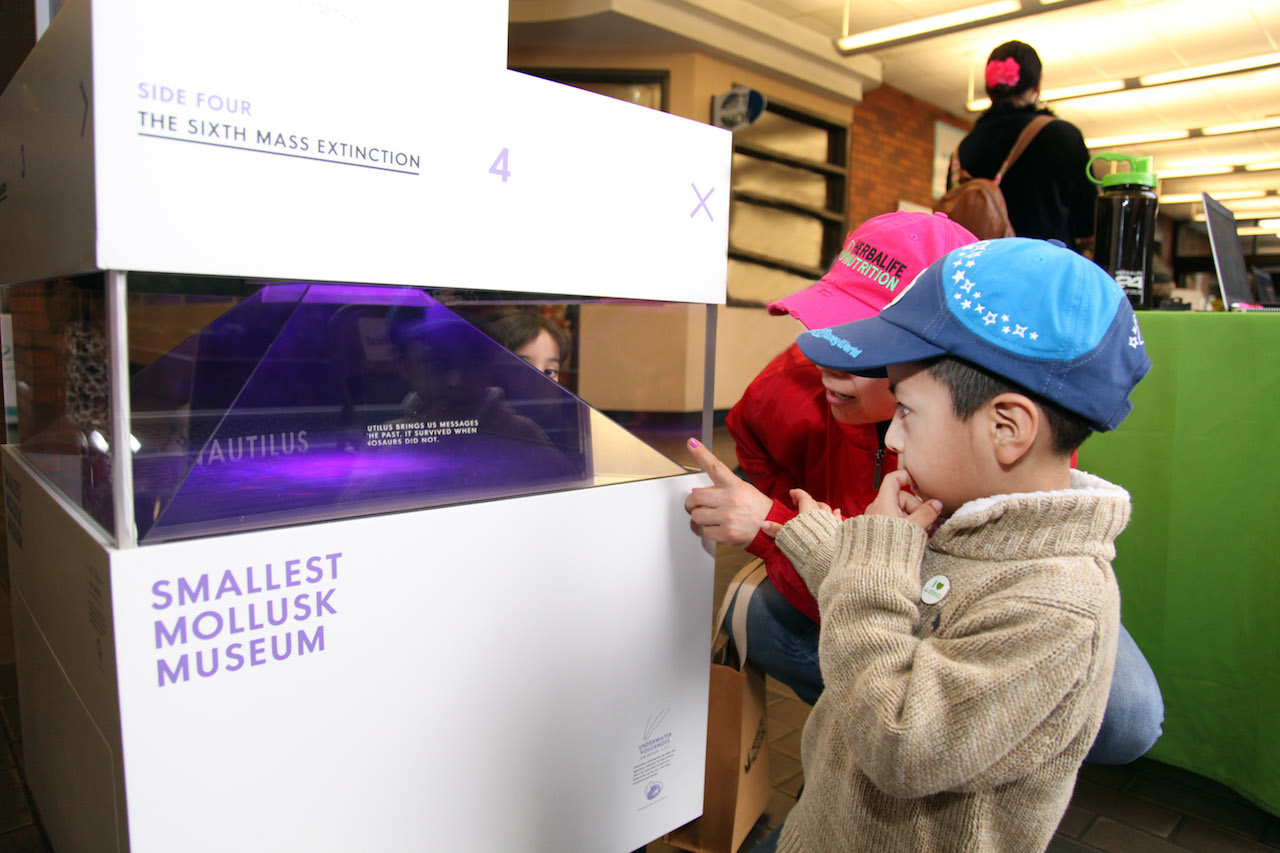
An interactive exhibit aims to raise awareness about the natural world
Mollusks aren’t something that pops into someone’s head when they think of their local hospital, but that’s changing at the South Bronx’s biggest medical facility.
The Smallest Mollusk Museum, an interactive mini-museum about the size of a refrigerator, is turning heads in the lobby of Lincoln Hospital, while turning young people onto science through an educational initiative that documents the history of invertebrates. It integrates 15 natural history exhibits, five videos, eight sculptures, three optical illusions and a hologram into one educational tool.
MICRO, a nonprofit that aims to boost science education, designed the structure to teach young people about the mysteries behind oft-ignored snails, slugs, mussels and related species. The organization is designing a fleet of science mini-museums for installation in health centers, hospitals, and care facilities.
Scientist Amanda Schochet, who co-founded the World’s Smallest Mollusk Museum, says that accessibility was an important factor behind its design.
“The fact that it’s 2-feet by 2-feet is really central to our mission. We want to build these for a space that’s small enough that it can really go anywhere and reach everyone,” Schochet said. “We want there to be information that’s dense enough that it can pack a punch and really engage people, but also told in a way that is interesting to people with all different levels of experience in science.”
Although there are more than 100 museums in New York City, fewer than 10 of them are located in the Bronx. Officials at Lincoln Hospital decided to do something to change that imbalance, so they reached out to MICRO and requested they temporarily install the mini-museum in the hospital lobby on E. 149 Street at the corner of Morris Avenue. Lincoln’s CEO Milton Nuñez hopes that the new attraction will help change the way patients and their visitors feel when at the hospital.
“Everyone including the kids are fascinated by the museum—A lot of knowledge in a small space,” said Nuñez. “Visiting a hospital is almost never at the top of anyone’s list. This helps lift spirits.”
Although the museum was initially designed to to help pique children’s curiosity about the natural world, adults have shown an interest in the project as well.
“Stem education is often focused on kids, but grown-ups are curious people too and knowing about science and technology is important and it’s empowering,” said Schochet. “We really wanted adults to have access to this information in a way that’s entertaining. We tried to think about it as a Pixar movie, where kids watch the movies and love them because they’re cartoons, but adults watch Pixar movies too and that’s how we wanted to design our content.”
The museum is scheduled to remain at Lincoln through July, and maybe for the rest of the year.
For more information about Micro’s science projects, visit www.micro.ooo or follow @themicromuseums on Twitter, Facebook and Instagram.

